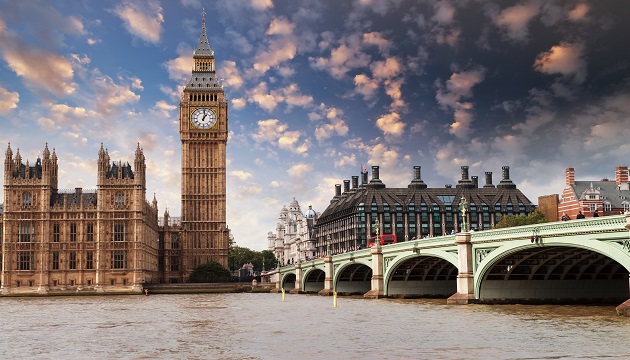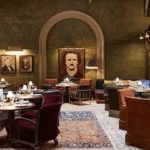Wider footpaths, more cycle paths, benches, green strips, new metro stations, the transformation of the old Gorkipark into a hip metropolitan park – the 2018 FIFA World Cup has ensured that the cityscape changes.
Moscow is an opulent, cosmopolitan city where the rush of people is relentless. Whether you’re in search of a glitzy nightclub, Michelin-starred restaurant or modest drinking hole, you won’t have to look far. Moscow’s storied history is on full display—from extravagant subways emblematic of the Soviet era to the famed Red Square that dominates the city center.
As the capital of Russia, Moscow is the political, economic and cultural hub of the country. It’s home to the country’s largest banks and company headquarters. Primary industries include energy production, software development and textile manufacturing. Tourism is big, too, and visitors have packed the city during the 2018 FIFA World Cup™ tournament.
Getting around
Three major airports serve Moscow. Sheremetyevo International is 18 miles northwest of the city center, while Domodedovo is 26 miles and Vnukovo International is 17 miles southwest. Taxis from each airport take about 45 minutes to the city center, but that time can double in heavy traffic. Aeroexpress trains connect the airports to centrally located metro stations. Travel time is 35-45 minutes. A one-way fare is 500 rubles (US$8.87 using the exchange rate US$1 = 56.35 RUB).
Most of the metro station signs are in Russian, so plan your route beforehand with a map in your language. Many of the stations are works of art, so it’s worth taking the metro just to have a look. It’s open from 5:20 a.m. to 1 a.m. A single fare is 28 RUB (US$0.50).
You can hail cabs on the street or have your hotel call one for you. There are no meters, so you’ll have to negotiate the price of a fare. If you’re traveling within central Moscow, you shouldn’t pay more than 200 RUB (US$3.55).
Where to stay
If you’re looking for luxury and upscale hotel options, try the St. Regis Moscow Nikolskaya (Street Nikolskaya 12; Ph: +7-495-967-7776), Radisson Blu Belorusskaya Hotel Moscow (26a 3rd St. of Jamskogo Polja; Ph: +7-495-660-4900) or Marriott Moscow Grand (26/1 Tverskaya St.; Ph: +7-495-937-0000).
Midscale and economy options include Hampton by Hilton Moscow Strogino (20 Kulakova St.; Ph: +7-499-745-0600) and Ibis Moscow Dynamo (Leningradsky Prospect 37; Ph: +7-495-139-0304).
Things to see and do
Visitors must experience the weight of history in Red Square, one of Russia’s most famous landmarks. Cobblestones pave the way to the Kremlin, Lenin’s Tomb, St. Basil’s Cathedral and the Russian State Historical Museum. Plus, the official residence of the Russian president sits on Red Square.
You can enter the square free of charge, but to get a sense of the historical significance, consider joining a walking tour. Some private tour operators offer pickup and drop-off services at hotels. Be sure to experience the square in the evening when it’s lit up against the night sky. It’s a spectacular scene.
The Tretyakov Gallery holds a vast collection of Russian art that spans thousands of years. It was founded by Russian merchant Paval Tretyakov, who donated his art collection to the city of Moscow in 1892. The gallery now houses more than 130,000 works. It’s closed on Mondays and stays open late on Thursday, Friday and Saturday. Admission is 500 RUB (US$8.87).
Luzhniki Stadium is at the center of Moscow’s 145-hectare Olympic complex, one of the largest sports complexes in the world. Luzhniki Stadium is the main venue and the heart of the 2018 FIFA World Cup tournament—used for the opening match on June 14, a semi-final and the final on July 15.
The Luzhniki complex stretches along the Moscow River and lies opposite the beautiful Vorob’evy Hills Natural Park. The majestic Moscow State University observation area overlooks the stadium.
An evening at the Bolshoi Theatre is captivating. It’s the second-biggest opera house in
Europe and a grand example of Russian classical architecture. The six-tier auditorium is awe-inspiring. A range of Russian and foreign ballets and operas grace the stage each year.
Where to eat
Julia Jon Joli is an authentic Georgian restaurant with a cozy interior. The menu is fairly priced and includes kebabs, khinkali and khachapuri, as well as fine Georgian wine. There are several locations within Moscow, but try the one near Paveletaskya metro station at 36 Bakhrushina St.
For cheap eats and a lively atmosphere, head to Kamchata. It’s a typical Russian-style establishment with loud ‛90s music playing in the background and a bar that’s well stocked with, you guessed it, vodka. Be prepared for a night of dancing! Find it at Ulitsa Kuznetskiy Most, 7; Ph: +7-495-624-8825.
Voronezh is a new addition to the culinary scene in Moscow. The restaurant is in the heart of the city, directly in front of Cathedral of Christ the Savior, and it has something for everyone. It offers three floors of dining, each with a distinct décor, concept and price point. But they all put a focus on serving quality cuts of beef. It’s at Ulitsa Prechistenka, 4; Ph: +7-495-695-0641.
At Syrovarnya, the chef puts a priority on locally sourced, organic ingredients. Sirovarnya translates to “a place where cheese is made,” so expect to find a long list of fine cheeses on the menu. The outdoor terrace is packed on summer evenings, but quality dishes keep patrons coming back no matter the time of year. The address is Kutuzovsky Prospekt 12, Building 1; Ph: +7-495-803-2401.

